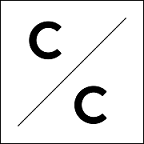Originally written by Lisa A. Cummings, Esq. and republished with permission.
On September 16, the IRS finalized regulations regarding catch up contributions under IRS Section 414(v). These final regulations generally become applicable for contributions made in taxable years after December 31, 2026. Retirement plan sponsors should start now to prepare for these new regulations which coordinate SECURE 2.0’s new Roth catch up mandate and the special higher limits at ages 60-63.
New High Earner Catch Up Requirement
The final regulations include a new catch up provisions for employees whose prior year FICA wages exceed the indexed threshold of $145,000. For these affected employees, their catch up contributions must be designated as Roth contributions. Additionally, if a participant is subject to the Roth requirement, the plan must offer Roth catch up availability to all catch up eligible participants. SEP and SIMPLE IRA arrangements are excluded from the Roth mandate by statute.
A catch-up contribution is required to be a designated Roth contribution only to the extent that the participant has not made otherwise made an elective Roth deferrals in the taxable year of an amount at least equal to the catch-up limit. If a participant impacted by this new Roth catch up rule has already made total tax year Roth elective deferrals equal or greater than the catch-up contribution limit, the participant’s Roth catch-up requirement is satisfied.
If a participant is impacted by the $145,000 wage rule elects to make pre-tax contributions, then the plan may deem future contributions above the catch-up contribution limit automatically be “deemed” Roth contributions or order to effectuate the regulatory requirement. However, the Plan must provide the impacted participant with an effective opportunity to make a new election that is different from the deemed election. The Plan document must be updated to reflect these new regulations.
A plan that does not offer a qualified Roth contribution program may limit catch ups to zero for participants who are subject to the Roth requirement without violating universal availability, although nondiscrimination testing must still be considered across the controlled group.
Clarification on age 60-63 Super Catch Up
SECURE 2.0 established the super catch up provision for participants age 60-63 (which allows contribution of 150% of regular catch up limit). The final regulations confirm that adoption of the super catch up provision is not mandatory for plan sponsors. However, if the plan sponsor adopts the super catch up provision for ages 60-63, then the plan sponsor must apply the provision across any related plans.
Next steps for Retirement Plan Sponsors
Plan sponsors should take the following steps now. Start discussions with Plan administrators now to understand when they can start the Plan amendment process. Work with payroll systems and the Plan recordkeeper to ensure the new wage threshold is triggered at the point of the employee reaching the $145,000 cap. Decide as a Plan Sponsor (a) whether to add or confirm Roth contributions to the Plan; (b) whether to adopt the age 60-63 super catch up provisions; (c) ensure plan documents are amended timely; (d) draft employee communications; and (e) prepare for any needed correction workflows with the plan administrator now.

